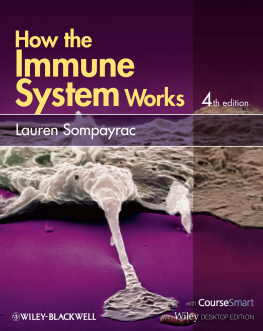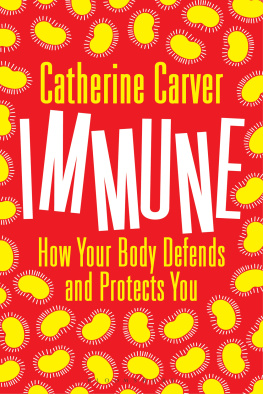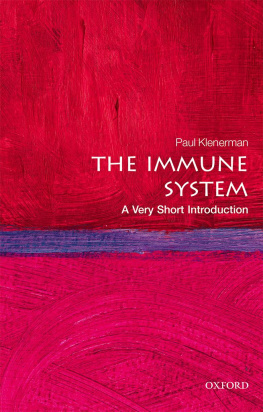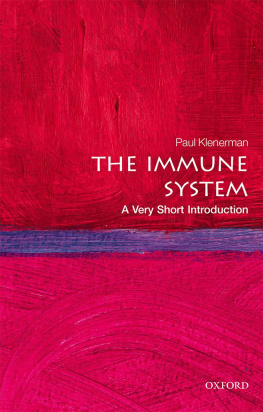I dedicate this book to my sweetheart, my best friend, and my wife: Vicki Sompayrac.
This edition first published 2012 2012 by John Wiley & Sons, Ltd.
Wiley-Blackwell is an imprint of John Wiley & Sons, formed by the merger of Wileys global Scientific, Technical and Medical business with Blackwell Publishing.
Registered office: John Wiley & Sons, Ltd, The Atrium, Southern Gate, Chichester, West Sussex, PO19 8SQ, UK
Editorial offices: 9600 Garsington Road, Oxford, OX4 2DQ, UK
The Atrium, Southern Gate, Chichester, West Sussex, PO19 8SQ, UK
111 River Street, Hoboken, NJ 07030-5774, USA
For details of our global editorial offices, for customer services and for information about how to apply for permission to reuse the copyright material in this book please see our website at www.wiley.com/wiley-blackwell.
The right of the author to be identified as the author of this work has been asserted in accordance with the UK Copyright, Designs and Patents Act 1988.
All rights reserved. No part of this publication may be reproduced, stored in a retrieval system, or transmitted, in any form or by any means, electronic, mechanical, photocopying, recording or otherwise, except as permitted by the UK Copyright, Designs and Patents Act 1988, without the prior permission of the publisher.
Designations used by companies to distinguish their products are often claimed as trademarks. All brand names and product names used in this book are trade names, service marks, trademarks or registered trademarks of their respective owners. The publisher is not associated with any product or vendor mentioned in this book. This publication is designed to provide accurate and authoritative information in regard to the subject matter covered. It is sold on the understanding that the publisher is not engaged in rendering professional services. If professional advice or other expert assistance is required, the services of a competent professional should be sought.
First published 1999
Second edition 2003
Third edition 2008
Fourth edition 2012
Cover image and Figure 1 used with permission from Lennart Nilsson photography / Boehringer Ingelheim / SCANPIX.
Library of Congress Cataloging-in-Publication Data
Sompayrac, Lauren.
How the immune system works / Lauren Sompayrac. 4th ed.
p. cm.
Includes bibliographical references and index.
ISBN 978-0-470-65729-4 (pbk. : alk. paper) 1. Immune system. 2. Immunity. I. Title.
[DNLM: 1. Immune Systemphysiology. 2. Immune Systemanatomy & histology. 3. Immune Systemphysiopathology. 4. Immunityphysiology. QW 504 S697h 2012]
QR181.S65 2012
616.07'9dc23
2011024775
A catalogue record for this book is available from the British Library.
ISBN 978-1-118-29861-9 (epdf)
ISBN 978-1-118-29862-6 (epub)
ISBN 978-1-118-29860-2 (mobi)
Acknowledgments
I would like to thank the following people, whose critical comments on the earlier editions were most helpful: Drs. Mark Dubin, Linda Clayton, Dan Tenen, Jim Cook, Tom Mitchell, Lanny Rosenwasser, and Eric Martz. Thanks also go to Diane Lorenz, who illustrated the first and second editions, and whose wonderful artwork can still be found in this book. Finally, I wish to thank Vicki Sompayrac, whose wise suggestions helped make this book more readable, and whose editing was invaluable in preparing the final manuscript.
How to Use This Book
I wrote How the Immune System Works because I couldnt find a book that would give my students an overall view of the immune system. Sure, there are as many good, thick textbooks as a person might have money to buy, but these are crammed with every possible detail. There are also lots of review books that are great if you want a summary of what youve already learned but they wont teach you immunology. What was missing was a short book that tells, in simple language, how the immune system fits together a book that presents the big picture of the immune system, without the jargon and the details.
How the Immune System Works is written in the form of lectures, because I want to talk to you directly, just as if we were together in a classroom. Although Lecture 1 is a light-hearted overview, meant to give you a running start at the subject, youll soon discover that this is not baby immunology. How the Immune System Works is a concept-driven analysis of how the immune system players work together to protect us from disease and why they do it this way.
In Lectures 2 through 10, I focus more closely on the individual players and their roles. These lectures are short, so you probably can read them all in a couple of afternoons. In fact, I strongly suggest that you begin by reading quickly through Lectures . The whole idea is to get an overall view of the subject, and if you read one lecture a week, that wont happen. Dont study these ten lectures your first time through. Dont even bother with the Thought Questions at the end of each lecture. Just rip through them. Then, once you have a feel for the system, go back and spend a bit more time with these same ten lectures to get a clearer understanding of the hows and whys.
In Lectures 1114, I discuss the AIDS virus, vaccines, allergies, autoimmune diseases, and cancer. These lectures will let you practice what you have learned in the earlier lectures by examining real-world examples of the immune system at work. And Lecture 15 A Critique of the Immune System will help you put in full perspective just how wonderful the immune defense really is. So after you have gone through Lectures 110 twice, Id suggest you read these last five lectures. When you do, I think youll be amazed by how much you now understand about the immune system.
In some settings, How the Immune System Works will serve as the main text for the immunology section of a larger course. For a semester-long undergraduate or graduate immunology course, your professor may use this book as a companion to a comprehensive textbook. In this situation, reviewing the appropriate lecture in How the Immune System Works as your course proceeds will help you keep the big picture in focus as the details are filled in. Its really easy to get lost in the details.
No matter how your professor may choose to use this book, you should keep one important point in mind: I didnt write How the Immune System Works for your professor. This book is for you!
The Anytime, Anywhere Textbook

For the first time, your textbook comes with free access to a Wiley Desktop Edition a digital, interactive version of this textbook which you own as soon as you download it.
Access to your Wiley Desktop Edition is available with proof of purchase within 90 days. Visit http://support.wiley.com to request via Chat or Ask A Question.
Your Wiley Desktop Edition allows you to:
Search: Save time by finding terms and topics instantly in your book, your notes, even your whole library (once youve downloaded more textbooks)
Note and Highlight: Colour code, highlight and make digital notes right in the text so you can find them quickly and easily
Organize: Keep books, notes and class materials organized in folders inside the application
Share: Exchange notes and highlights with friends, classmates and study groups
Upgrade: Your textbook can be transferred when you need to change or upgrade computers
To access your Wiley Desktop Edition, find the redemption code on the inside front cover of this book and carefully scratch away the top coating of the label. Visit www.vitalsource.com/software/bookshelf/downloads to download the Bookshelf application to your computer, laptop or mobile device. Open the Bookshelf application on your computer and register for an account. Follow the registration process and enter your redemption code to download your digital book.














